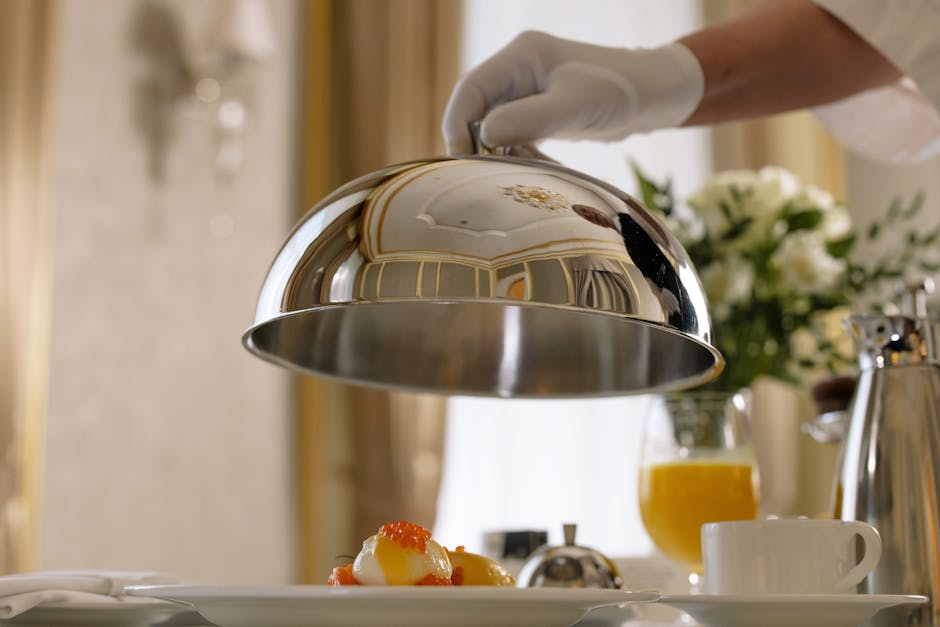Introduction to the World of Caviar for the Connoisseur
Diving into the world of caviar is like unlocking a treasure chest of the sea’s finest jewels. Caviar, the salt-cured eggs of sturgeon, has graced dining tables of the elite and gourmet aficionados for centuries, symbolizing luxury and refined taste. If you’re venturing into this exquisite world, a few basic insights will set the stage for your sophisticated palate. First off, know that true caviar comes from the sturgeon species, with Beluga, Ossetra, and Sevruga leading as the most coveted varieties. However, the caviar scene embraces a broader spectrum including roe from salmon, trout, and other fish, offering a palette of flavors and textures. The allure of caviar lies not just in its taste but its rarity and the meticulous effort behind its harvest and preparation. When selecting caviar, pay attention to its size, color, and texture. The pearls should be firm, glossy, and separate freely; their color can range from deep black to golden. Serving caviar is an art in itself, traditionally accompanied by a mother of pearl spoon to avoid tainting its flavor. Remember, caviar is more than just food; it’s an experience to savor, a journey of taste that whispers stories of ancient seas and luxury.
Understanding the Different Types of Caviar
Jumping straight into caviar, it isn’t just fish eggs. The term “caviar” refers specifically to the roe from wild sturgeon in the Caspian and Black Sea, but let’s keep it simple. Caviar is graded based on the size, color, and texture of the eggs, and of course, its taste. First up, we’ve got Beluga caviar. This is the big shot of the caviar world. Its eggs are the largest, and its flavor is described as rich and buttery. It’s also the most expensive, often because it’s the rarest. Next, there’s Osetra caviar, which comes in a variety of colors from golden to dark brown. Its nuts-like flavor makes it a favorite for many. Then we have Sevruga caviar, known for its smaller eggs but packed with an intense flavor. It’s a bit more affordable compared to the first two, but still offers a luxurious taste. There’s also Sterlet caviar which was once reserved for royalty. Its eggs are small and range in color from light to dark grey. Last but least, for something a bit different, Kaluga caviar serves as an alternate to Beluga. It’s similar in taste and texture, made from a hybrid sturgeon species. When choosing caviar, think about the taste profile you’re after and the occasion you’re planning. Whether you’re aiming to impress or just enjoy, there’s a type of caviar perfect for the moment.
How to Identify High-Quality Caviar
Identifying high-quality caviar isn’t as tough as it sounds. You just need to know what to look for. First, consider the pearls—the eggs. They should be firm, glossy, and separate easily. If they’re mushy or clump together, you’re probably looking at lower quality. Next, sniff. High-quality caviar has a fresh, slightly ocean-like smell. Anything fishy or sour, and it’s a no-go. Color is also key. While it can vary, from the deep black of Beluga to the golden hues of Almas, the color should be vibrant, not dull. Lastly, taste. The flavor should be delicate, buttery, with a hint of the sea, not overwhelmingly salty. Remember, good caviar doesn’t overpower; it delights. Stick with these tips, and you’ll navigate your way to the best jars out there.
Essential Tools for Every Caviar Connoisseur
Every caviar connoisseur needs the right tools to fully enjoy their gourmet experience. First up, you need a mother-of-pearl spoon. Metal spoons? Forget about them. They can alter the taste of your caviar. A mother-of-pearl spoon ensures that the delicate flavor of the caviar stays intact. Next, consider a glass or ceramic serving dish. Why? These materials keep the caviar cool, which is crucial for maintaining its quality and taste. Speaking of keeping things cool, a small ice bowl for serving is key. This setup keeps your caviar at the perfect temperature without direct contact with ice, which could water it down. Lastly, don’t overlook the proper serving knife for those caviar tins. You want a smooth, easy opening without any hassle. These tools aren’t just functional; they elevate the entire experience, making you not just someone who eats caviar but a true connoisseur.
The Art of Selecting the Perfect Caviar
Selecting the perfect caviar isn’t just about picking the most expensive tin on the shelf. True connoisseurs know it’s about understanding the varieties and recognizing quality. First, let’s talk types. The most prized caviar comes from sturgeon, specifically Beluga, Ossetra, and Sevruga. Beluga is the rarest and priciest due to its large, creamy eggs. Osetra varies in color and has a nutty flavor, making it highly sought-after. Sevruga, with its smaller grains, offers a more intense flavor.
Quality signals are next. Fresh caviar should have a slight sea smell, be shiny, and the eggs should separate easily. If it smells fishy or the eggs are mushy, steer clear. Remember, the color isn’t a quality indicator; it varies between species.
Consider the source, too. Wild caviar is rare and expensive due to overfishing, which places a premium on sustainably farmed options. These provide quality without compromising the sturgeon populations.
Finally, remember the serving size. A one-ounce jar is enough for two people if you’re serving it solo. If it’s part of a dish, that same ounce can stretch to four servings.
In sum, perfect caviar selection blends knowledge of types, quality detection, sustainability considerations, and serving size savvy. Understand these, and you’re on your way to enjoying caviar at its best.
Proper Storage Techniques for Preserving Freshness
To keep caviar at its best, it’s all about cool, constant temperatures. Fridge is the spot—back part, where it’s coldest. Aim for temps between 26 to 36 degrees Fahrenheit (-3 to 2 degrees Celsius). This chill zone keeps it fresh without freezing it since frozen caviar’s a no-go. Loses its texture and flavor. Bad move. Got your caviar in a tin or jar? Keep it sealed tight until showtime. Once you crack it open, eat within three days for peak taste. Use a non-metal spoon to dish it out—think plastic, glass, or even better, mother of pearl. Metal messes with the flavor, gives it a metallic tang. Nobody wants that. Snapchatting your snack? Be swift. Caviar hates warmth. Out of the fridge, serve it quick, on ice if you can. The goal: keep it cool, enjoy it fresh, and handle it gentle. That’s the pro move for top-notch caviar.
Serving Suggestions to Impress Your Guests
When it comes to serving caviar, the goal is to keep it simple and let the flavor of the caviar be the star. You’ll want to serve it chilled, straight from the fridge. Use a non-metallic spoon, like one made of mother of pearl or plastic, to avoid any metallic taste transferring to the caviar. If you want to impress your guests, here’s how to do it right. First, place the caviar tin on a bed of crushed ice to keep it cool throughout the serving time. Pair caviar with blinis or lightly toasted bread, adding a dollop of crème fraîche if desired. Keep accompaniments minimal. Thinly sliced cucumber, a small amount of finely chopped onion, or sieved hard-boiled eggs complement caviar without overpowering it. When it comes to drinks, classic pairings include ice-cold vodka or champagne. Remember, the key is subtlety; you want to enhance the caviar’s flavor, not drown it out. Serve small portions; caviar is a luxury, and a little goes a long way. With these tips, you’ll not only savor the exquisite taste of caviar but also impress your guests with your refined serving skills.
Pairing Caviar with Drinks and Food
Pairing caviar with the right drinks and food elevates the experience. Stick to chilled, dry champagne or a crisp, mineral-driven vodka. These beverages complement caviar’s richness without overpowering its delicate flavor. Avoid anything sweet or too fruity. As for food, simplicity is key. A classic setup includes blini or lightly toasted bread, a dollop of crème fraîche, and perhaps a sprinkle of finely chopped onion or chives. Lemon wedges can add a refreshing zest, but use sparingly. The goal is to enhance, not mask, the unique taste of the caviar. Remember, caviar is the star; everything else is a supporting player.
Common Mistakes to Avoid by Caviar Connoisseurs
When diving into the world of caviar, it’s easy to get tripped up by common mistakes. Here’s what you need to dodge to enjoy your caviar experience to the fullest. First off, never use metal spoons to serve caviar. Metal interacts negatively with caviar, altering its luxurious taste. Opt for spoons made from mother of pearl or even plastic. Next, storing caviar wrongly is a no-go. Caviar should be kept in the coldest part of your fridge, ideally at 26-36°F. Don’t let it sit at room temperature for too long before serving. Another mistake? Overloading it with accompaniments. Caviar’s flavor is delicate. Serving it with a bunch of strong-tasting sides can drown out its unique taste. Keep it simple. Finally, assuming all caviar is the same can spoil the fun. There are various types, each with its own flavor profile and texture. Experiment and find what you like best. Avoid these pitfalls, and you’re on your way to becoming a true caviar connoisseur.
Conclusion and Final Tips for Caviar Lovers
Wrapping this guide up, remember choosing and serving caviar isn’t just about splurging money. It’s an art. Quality beats quantity every time. Don’t get swayed by just the price tag or fancy packaging. Look for freshness, the source, and processing methods. For serving, keep it simple. Let the caviar be the star. A little goes a long way, so don’t overdo it. Whether you’re using a mother of pearl spoon or setting it atop a tiny blini, the goal is to appreciate its exquisite taste. Lastly, always trust your palate. If you enjoy a particular type, that’s your best pick. Caviar tasting is personal and subjective, much like fine wine. So go ahead, dive into the experience, and let your taste buds lead the way. Cheers to your caviar adventures!

